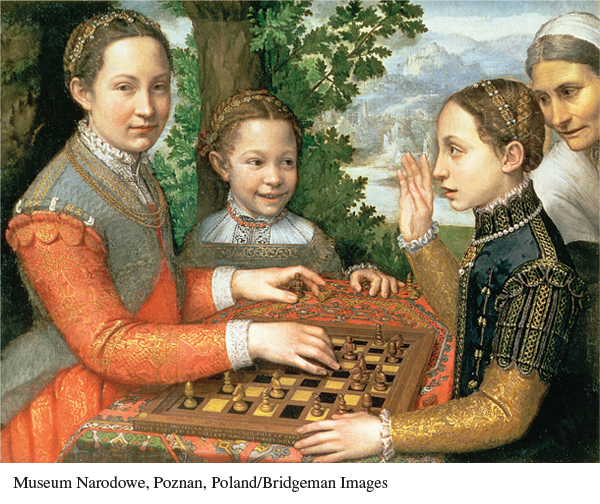A History of Western Society AP®: Printed Page 322-e
Cultural and political changes were intertwined with economic and social ones. First in Italy and then in growing cities in northern Europe, merchants and bankers grew wealthy from trade and money-lending, developing new business procedures and institutions, such as double-entry bookkeeping, joint stock companies, and banks, in a capitalist economic system. This hierarchy of wealth did not mean an end to the prominence of nobles, however, as new commercial elites intermarried and integrated with traditional elites. Despite the growth of cities, most people continued to live in the countryside, paying rent, taxes, and labor services, their hard work occasionally punctuated by family, religious, and communal rituals and festivities. In western Europe increasingly even the poorest peasants were personally free, while in eastern Europe peasants toiled as serfs for noble landowners. Neither the Renaissance nor the Reformation upset the widely held idea that men should be dominant and women subordinate, although in reality a few women were rulers and most women and girls worked alongside male family members in the fields or the shop. Rising population combined with a flood of silver from the New World led to steep inflation during the sixteenth century, which hit the poor especially hard, as food prices increased far more than wages. In the seventeenth century a period of colder and wetter weather led to poor yields and recurrent famine, just as rulers were increasing taxes to pay for larger armies and large landowners were switching to less labor-intensive commercialized agriculture. Overburdened peasants and the urban poor migrated in search of food and employment, and sometimes engaged in violent riots and revolts. City, church, and village leaders attempted to enforce public order by prohibiting begging, punishing vagabonds, trying witches, and outlawing activities judged immoral, and people also used less formal means to enforce community norms, such as shaming rituals, gossip, and accusations of dishonor. (Pages 358–361, 380–383, 402–404, 420–422, 452–456, 466–468, 481–482)
